
Solid-state materials science
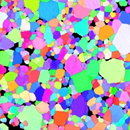
Raman scattering yields cubic crystal grain orientation
The paper proposes a fully optical method for determination of a cubic crystal grain orientation in a sample inspected by a Raman microscope. The method is based on a universal and strong polarisation anisotropy of the Raman scattering by doubly degenerate optic phonon modes. The feasibility of the approach is demonstrated by comparing grain orientations in a polycrystalline cubic lacunar spinel GaV4S8 determined independently using electron backscatter diffraction and Raman scattering methods.
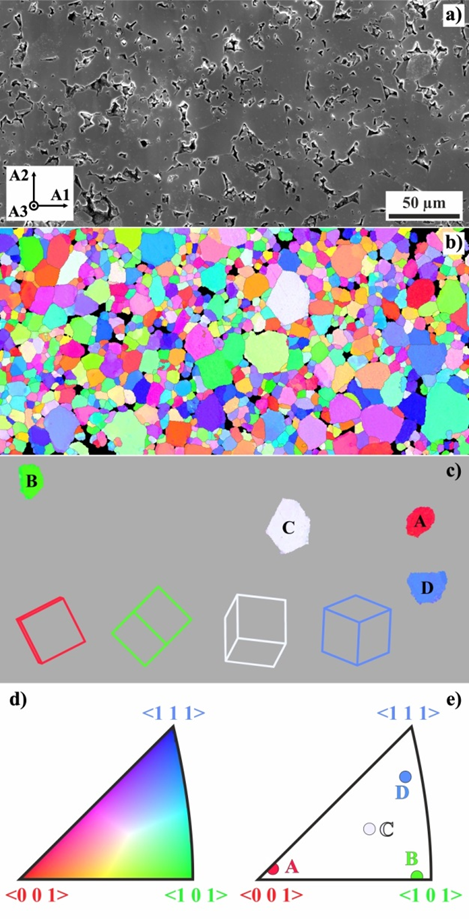
Figure: Comparison of grain orientations in a polycrystalline cubic lacunar spinel GaV4S8 determined independently using electron backscatter diffraction and Raman scattering methods.
K. Tesar, I. Gregora, P. Beresova, P. Vanek, P. Ondrejkovic, and J. Hlinka, Raman scattering yields cubic crystal grain orientation, Scientific Reports 9, 9385 (2019).
(show less)
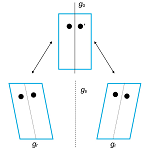
Degenerate (identity) chemical reactions in ferroelastic crystals
The work points to reconsideration of degenerate chemical reactions because of the chemical reactions which take place in a solid phase where the orientation of the substituting molecules is maintained. The work points to the examples of a ferroelastic switching which is accompanied by braking and reestablisment of chemical bonds. The article suggests that the definition of the degenerate chemical reactions might distinguish the reactions where the truly identical molecules are formed from those ones where the resulting molecules are enantiomers or enatiomorphs in case of domains.
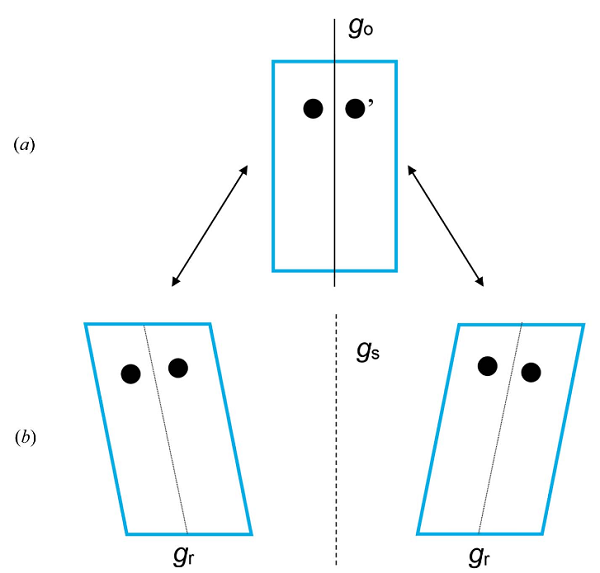
Figure: (a) The prototypic (paraelastic) phase with a pair of equivalent atoms related by the symmetry operation g with the related symmetry element go. (b) The ferroelastic domain pair is related by the suppressed (lost) symmetry element gs. There is a pseudosymmetry element gr within each domain state which is a remnant of the suppressed (lost) symmetry element go.
J. Fábry, Degenerate (identity) chemical reactions in ferroelastic crystals, Acta Cryst. B75, 287(2019).
(show less)
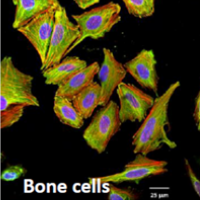
Coating of Ti39%Nb substrates by ferroelectric BaTiO3 promotes the bone cell growth
We proved that ferroelectric immersed in a liquid influences electric charge distribution at the surface. Therefore ferroelectric coating on bone implant surface promotes bone cell growth and proliferation, healing should be improved [1].
We synthesized ferroelectric BaTiO3 films on Ti and Ti39%Nb substrates by hydrothermal method [2, 3]. The bone cell growth is significantly higher on Ti39%Nb substrates coated by BaTiO3 than that on non-coated Ti39%Nb, glass and reference polystyrene [3].
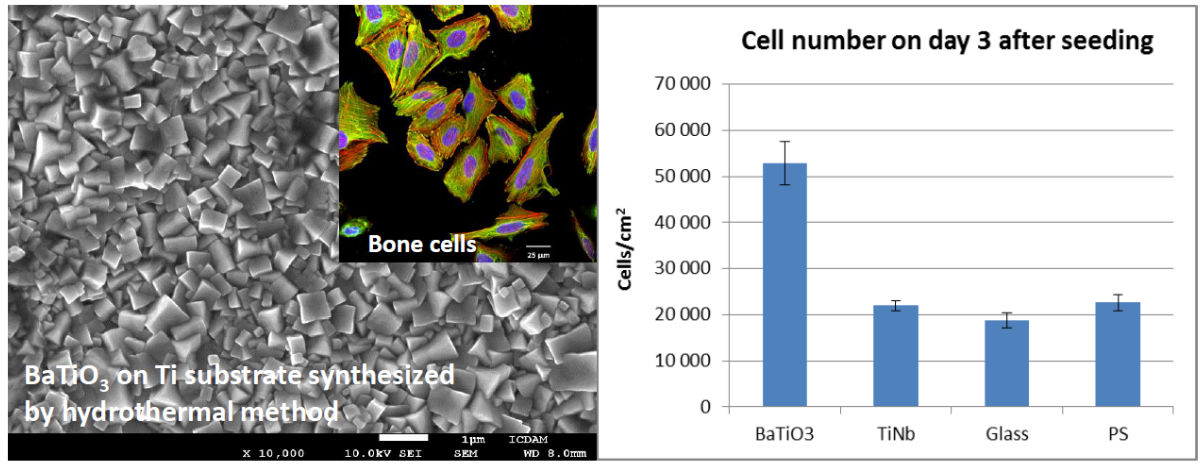
References
[1] P. Vaněk, Z. Kolská, T. Luxbacher, J.A.L. García, M. Lehocký, M. Vandrovcová, L. Bačáková, and J. Petzelt,
Electrical activity of ferroelectric biomaterials and its effects on the adhesion, growth and
enzymatic activity of human osteoblast-like cells, J. Phys. D: Appl. Phys. 49, 175403 (2016),
[2] P. Vaněk et al., Biocompatible ferroelectric coatings for bone implants,
oral presentation at ISAF/ECAPD/PFM conference, Darmstadt, (2016),
[3] P. Vaněk, M. Vandrovcová et al., to be published.
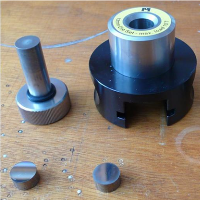
Preparation of CaMn7O12 single phase ceramics
Variety of multiferroic materials is prepared in our department. One of them was CaMn7O12 which exhibits strong magnetoelectric coupling. Small crystals (~ 0.1 mm) were prepared from high temperature solution of CaCl2 and MnO2, but they contained 9% of undesirable admixtures. An alternative method – modified sol-gel synthesis using water solutions of Ca and Mn nitrates and malic acid – produced pure CaMn7O12 powder with less than 1% admixtures. However, this method was not reproducible.
Using ethylene glycol instead of malic acid (modified Pechini method) gives reproducible results, no admixtures were detected by powder XRD. The ceramic pellets were prepared by uniaxial pressing and sintering and were used for spectroscopic measurements [ F. Kadlec et al., Phys. Rev. B 90, 054307 (2014)].
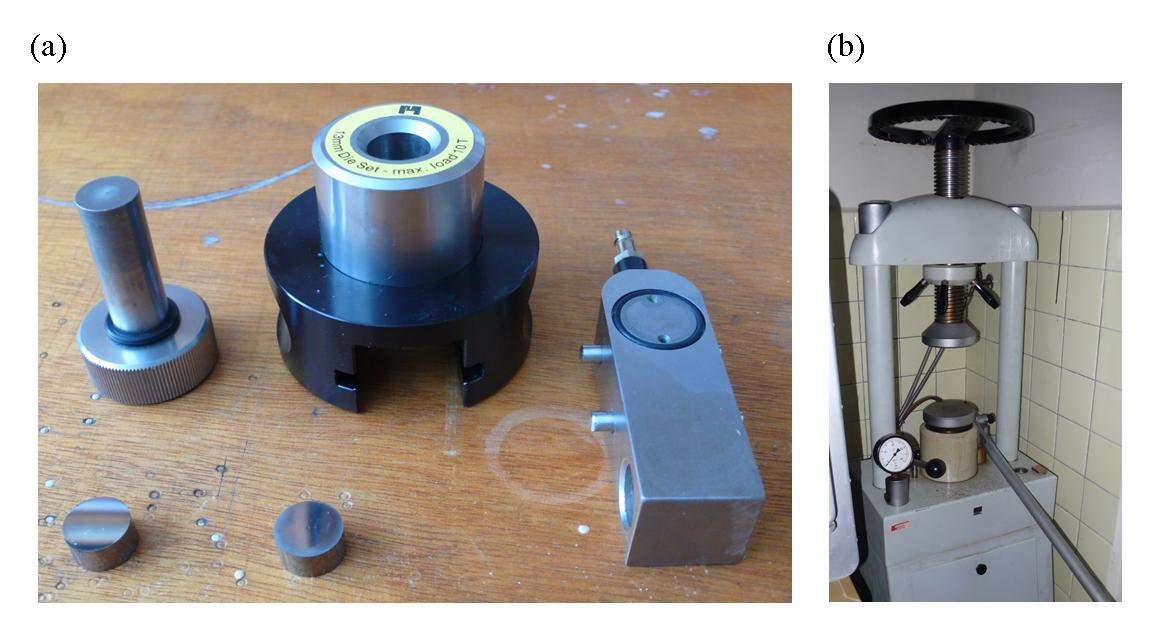
Figure: Uniaxial pressing of powders for ceramics preparation – pressing die (a) and hydraulic press (b). The pressed powder is filled into the die and is compressed between two pistons (13 mm in dia) using a hydraulic press. The pistons and die cylinder are made from hard metal. Maximum permissible pressure is 739 MPa.
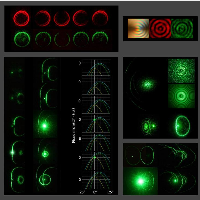
Study of linear and nonlinear optical properties of GUHP
Within a common project with I. Němec and M. Fridrichová from Department of Inorganic Chemistry, Faculty of Science, Charles University, focused on development of new advanced nonlinear-optical materials, we studied in detail the optical properties of guanylurea(1+) hydrogen phosphite (GUHP) crystal.
GUHP presents a novel highly birefringent (i.e. phase matchable) monoclinic non-centrosymmetric material with considerably large optical nonlinearities, wide transparency range and surprisingly high optical damage threshold, at least comparable with the best commonly used NLO crystals as LBO. Favorable properties of GUHP in addition allowed an investigation of several rather rare nonlinear optical effects, as e.g. the second harmonic conical refraction or second harmonic conoscopy (both top pictures) and also the spontaneous noncollinear SHG (bottom left), Fabry-Perot enhanced SHG (middle right) and the two beam noncolinear SHG under various conditions (bottom right).
[1] M. Fridrichová et al., Phase Transit. 83, 761 (2010)[2] J. Kroupa, J. Opt. 12, 045706 (2010)
[3] J. Kroupa and M. Fridrichová, J. Opt. 13, 035204 (2011)
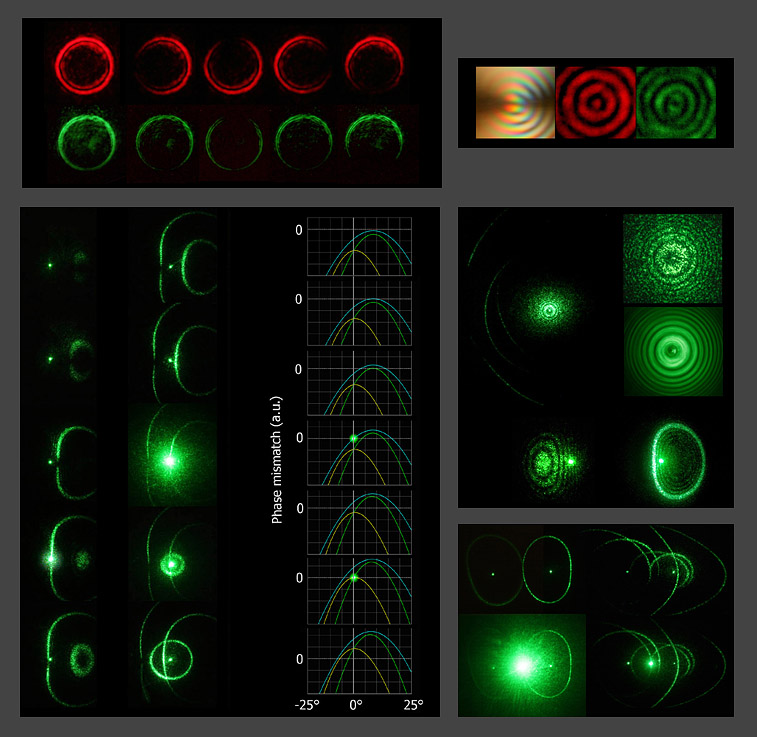
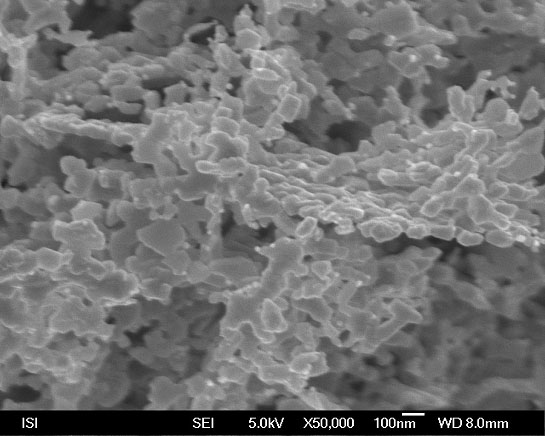
Sythesis of LaNiO3 nanocrystalline powder
(P. Vaněk and R. Krupková)LaNiO3 is oxide with perovskite structure and metallic electric conductivity. The agglomerated LaNiO3 nanocrystalline powder was prepared by water-solution sol-gel technique from nitrates with addition of malic acid. It is suitable for the preparation of porous oxide electrodes with application in electronics. Such application has been tested in the company AVX Czech Republic.
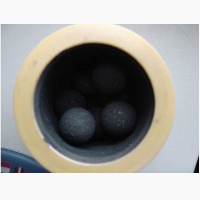
Mechanochemical activation for solid-state synthesis
(P. Vaněk and R. Krupková)Mechanochemical activation (intensive ultrafine milling) in a planetary ball micro mill puts deformation energy into components and starts the solid-state reaction. Following calcination (solid-state synthesis at enhanced temperature) is easier, usually only one calcination step is necessary, processing temperature can be reduced and resulting product is more homogeneous. E.g. multiferroic oxides EuTiO3 and (Eu0.5Ba0.5)TiO3 were prepared by this technique, the mixture of Eu2O3 and Ti2O3 after milling in a ZrO2 bowl is shown in the photograph. These oxides are interesting by simultaneous antiferromagnetic and ferroelectric properties at low temperature, multiferroic properties can be applied in electronics.

